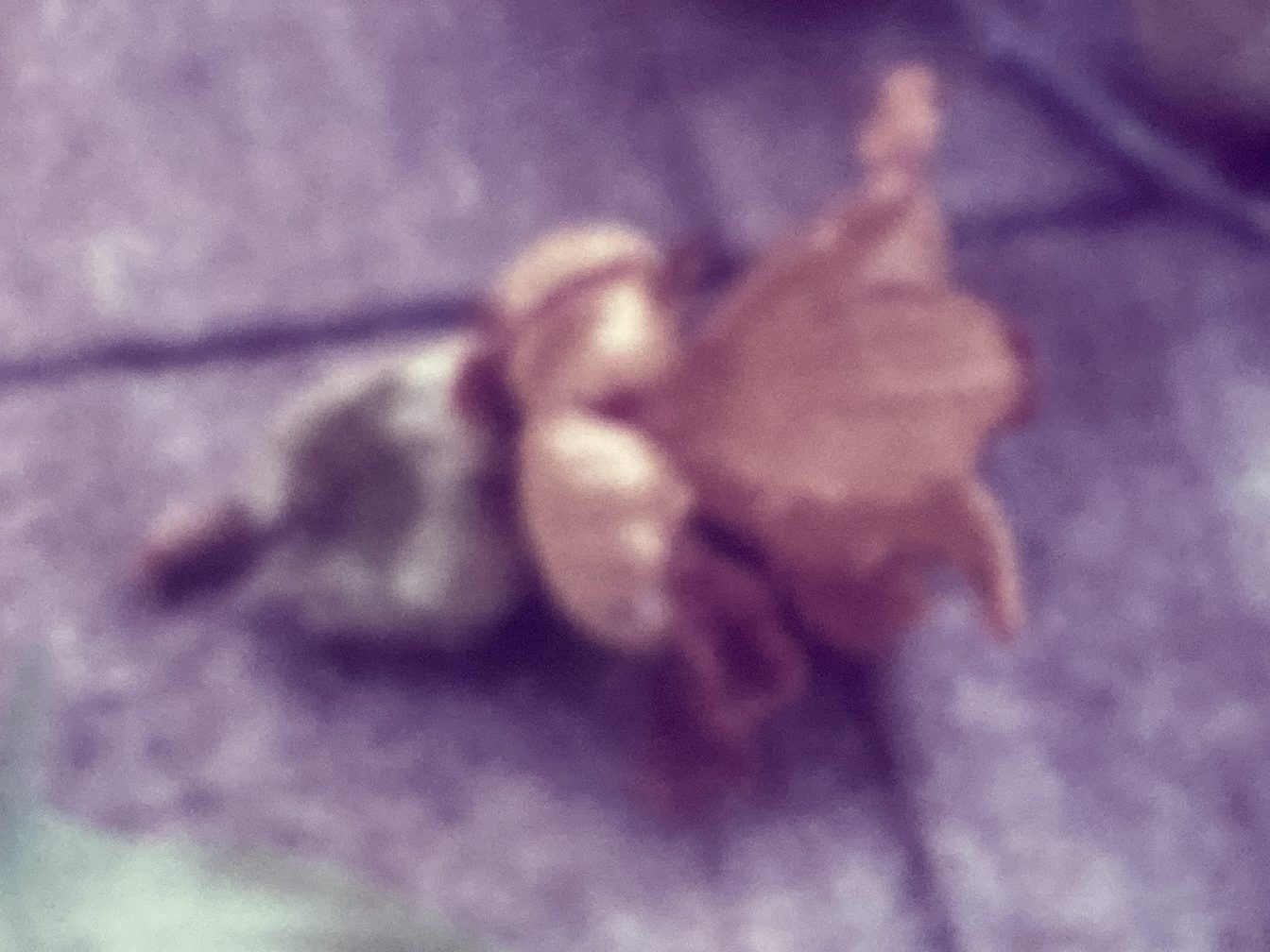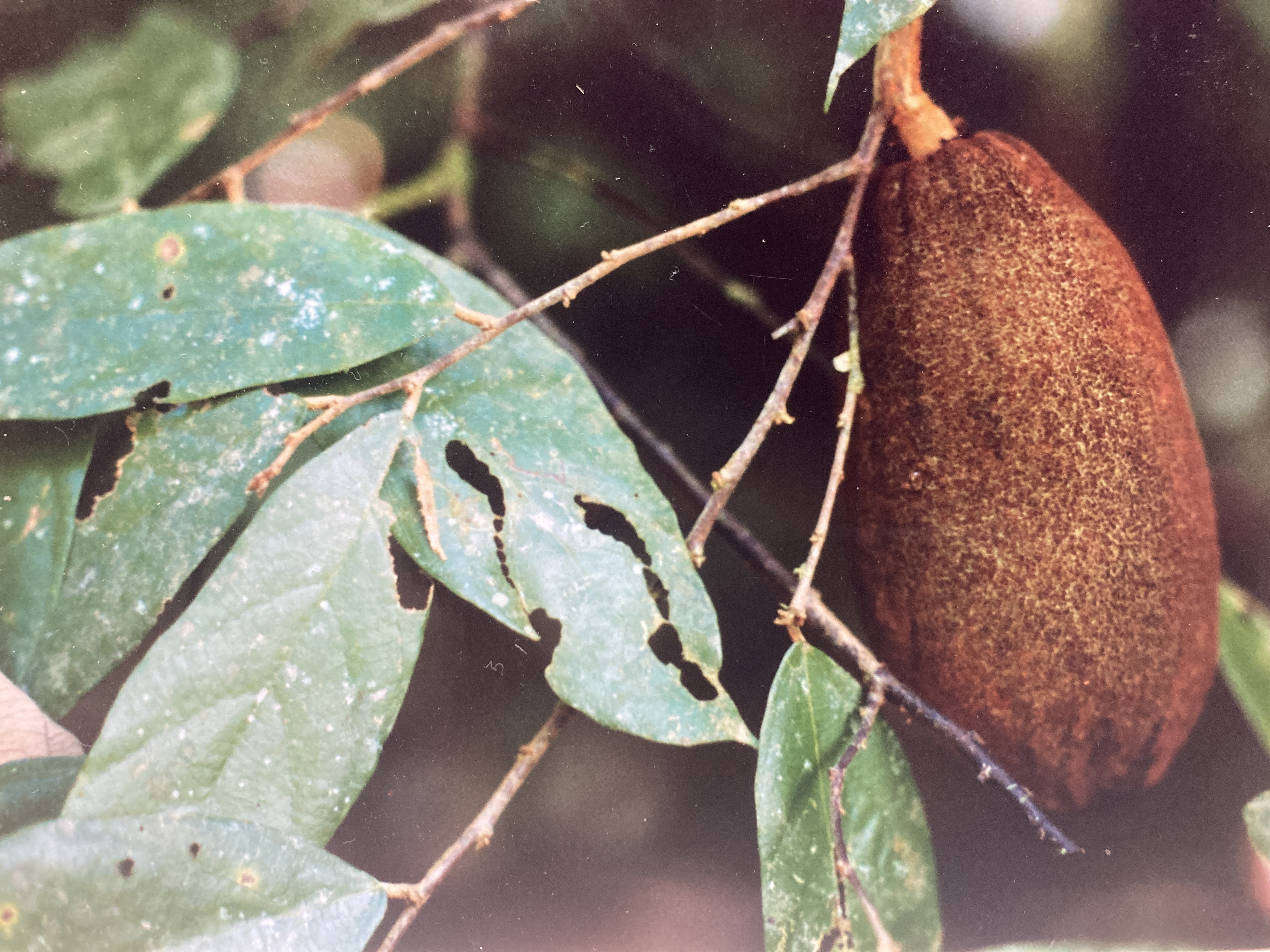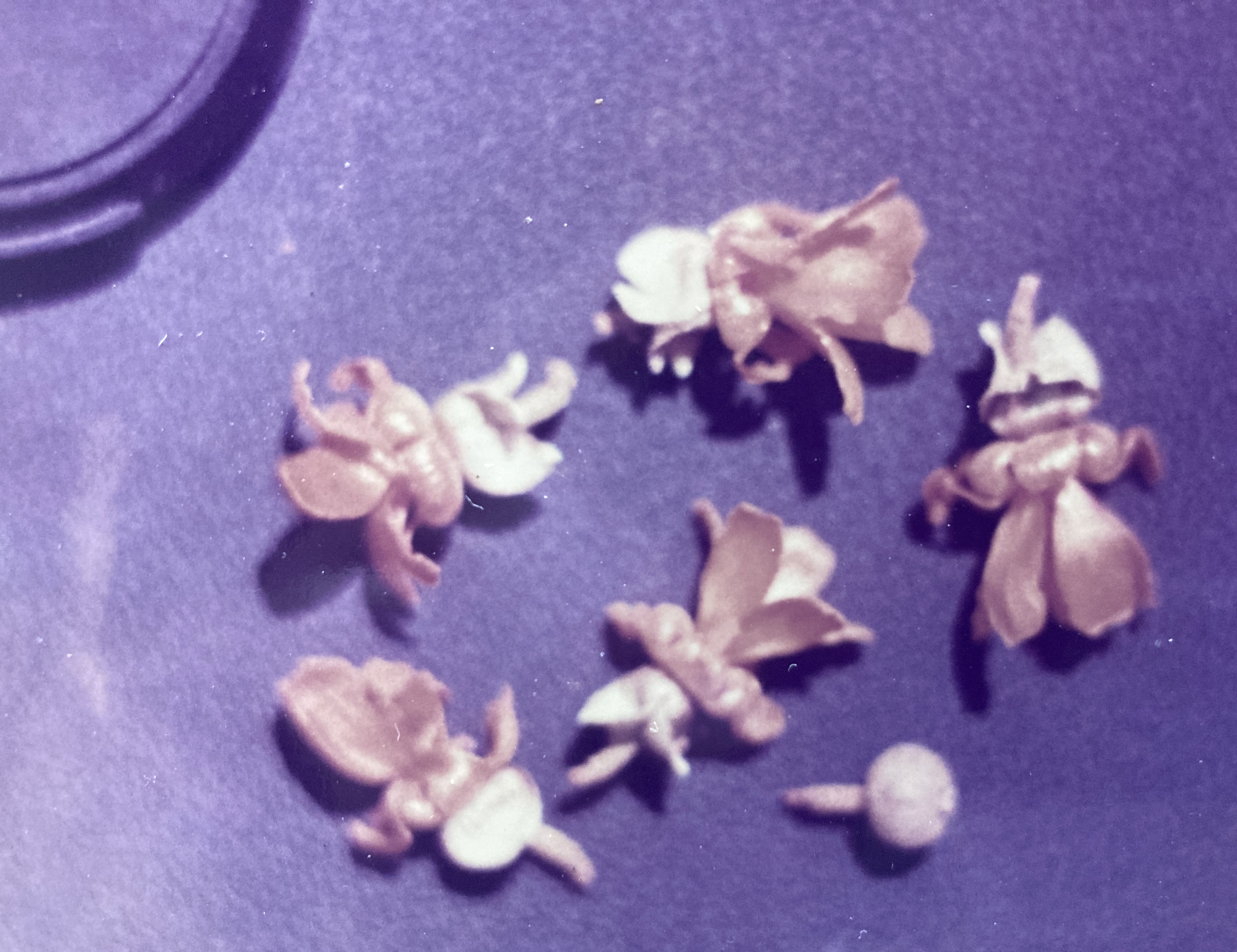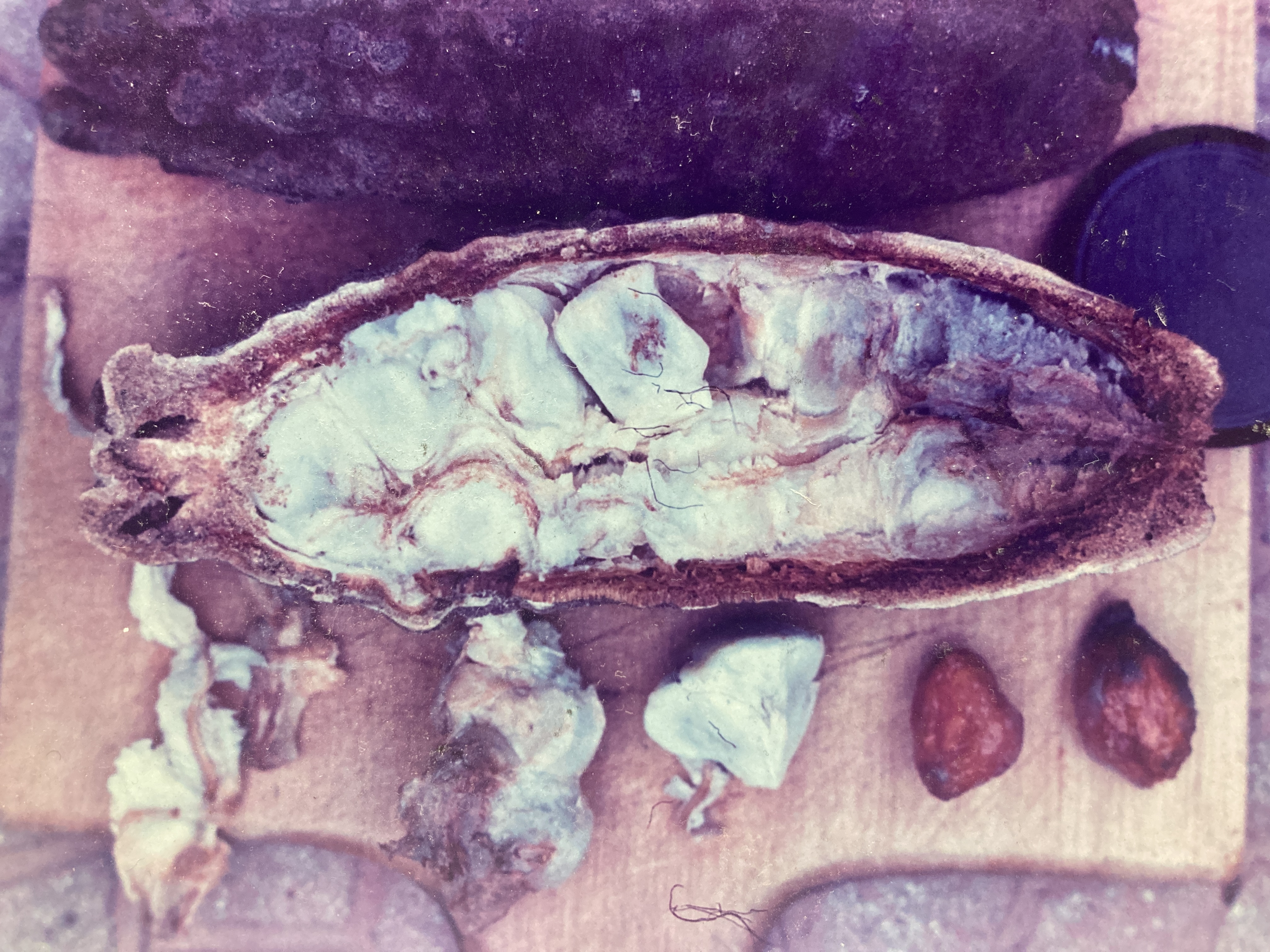Theobroma angustifolium Moc. et Sesse
Sterculiaceae
CACAO DE MONTE
Rare, subcanopy, evergreen tree (15-20 m) intriguing for its large, persistent woody pods and its delicate, buttercup-yellow flowers. Theobroma seems to prefer moist bottomland sites, where it grows in water-saturated soils. The species is also an important source of food for arboreal mammals.
Description: Cacao de Monte’s slightly knobby trunk (50 cm) is usually straight and mostly cylindrical, though bent and slightly irregular specimens are not uncommon. The tree lacks buttresses and is clad in dark brown, slightly exfoliating bark (the inner bark is red). Branches occupy nearly the whole length of the bole, beginning a scant 5 m above the ground, and the crown they create is tall, narrow, and moderately dense. Long and arching, the limbs diverge into fine, angular twigs that zig-zag slightly at their points of attachment to the foliage. Theobroma has simple, alternate leaves (20 cm by 6 cm) of elliptical shape. They are arranged in a horizontal plane, in two tiers on either side of the twigs. Supported by short (0.5 cm) petioles, the blades have slightly serrate distal margins and end in very long drip tips (1.5 cm). Blade undersides are characteristically whitish or creme colored, providing a distinct and memorable contrast with the deep, dull green of the upper surfaces. Twigs and leaf veins are covered with a fine, tan-colored pubescence. About 40% of the pre-existing foliage cover slowly yellows, falls, and regenerates during the late wet season months of September to December.
Flowers – perhaps the most unlikely and delightful characteristic of this species – develop from knobby, pubescent buds that grow in compact bundles from leaf axils. Mature blossoms are unexpectedly large and showy for a deep forest tree: they measure 3 cm in length and are a bright, glossy orange-yellow hue – very similar in color and texture to buttercups. Unfortunately, good things cannot last, and this thin, complex blossom is delicate and tantalizingly ephemeral. Five long, finger-like petals project forward and completely encompass a short, central pistil. Outside the corolla, an equal number of narrow staminoid appendages, each modified with a petal-like wing, curl sharply backwards, forming a collar or ring above the pedestal. Three, golden brown sepals form the calyx. Flowering occurs as a discreet series of several (two or three), short (two week) bursts that take place sometime between the months of December and March – with perhaps the most consistent and productive activity seen in January.
Immature fruits are visible within a couple months of flowering, appearing initially as hot-dog shaped cylinders (10 cm) held at the ends of elongated, woody branches and covered with fine, tan-colored pubescence. By May, the pods have reached full-size (20 cm by 7 cm) and are woody, roughly cylindrical (though tapering) structures with lumpy, green outer surfaces mottled by persistent clumps of brown hairs. Maturing as they turn dark brown, the thick-walled pods remain in the trees, hanging vertically until harvested by some arboreal mammal. Inside, around thirty brown, irregularly shaped seeds (2.5 cm) are embedded in a white pulpy mass with a banana-like odor. Harvests are annual events and they are consistent in their small size (only about 8 fruits per tree) and timing (July). Old pods, open, dry and revealing their fibrous interior, may remain in the canopy for many months afterward. In September, seeds can already be found germinating amid the wet leaf litter of the rainy-season forest floor. First-year seedlings have two, large, serrated leaves.

Similar Species: Theobroma shares its characteristic leaf shape and arrangement with Batocarpus costaricensis, a much more common species in Manuel Antonio. Actually, this uncanny resemblance is made more remarkable by the lack of any close botanical relationship between these two trees. Nevertheless, Batocarpus blades lack the whitish undersurfaces so characteristic of Theobroma, and the petioles of this former species are attached to the leaves at a point slightly underneath the blade – not directly at the base as is the case in Theobroma. More obviously, Batocarpus tree trunks show a marked red-orange color where they enter the soil, while Theobroma‘s bole remains dark brown. Finally, Theobroma‘s unique, dark brown pods persist in the crown for many months (sometimes being visible year round), and can thus be a reliable feature for positive identification.
Natural History: Fruits are harvested by a heretofore unseen arboreal mammal (pizote, raccoon, and/or monkey). The pods are usually sited – still hanging in the trees – but chewed open and with some of their contents strewn, in slimy gobs, over the nearby forest floor. The sweet pulp is undoubtedly a much sought-after source of food – once ripe, no pod remains unopened for very long.
Uses: Containing about thirty kinds of trees, the Theobroma genus is native to tropical America. Meaning “Food of the Gods”, the group includes true Chocolate (Theobroma cacao) as well as at least one other species whose seeds are valued for their flavor (Plotkin, 1993).
Distribution: In Manuel Antonio National Park (MANP), only two Theobroma trees have been located – in the low-lying, wet primary forests near the ANEP road. Costa Rica preserves other populations of Theobroma in Corcovado, Punta Leona, Hitoy Cerere, La Cangreja and Carara national parks and reserves.
Images: Flower Flower2 Fruit & Leaf Fruit2 Fruit & Seeds



